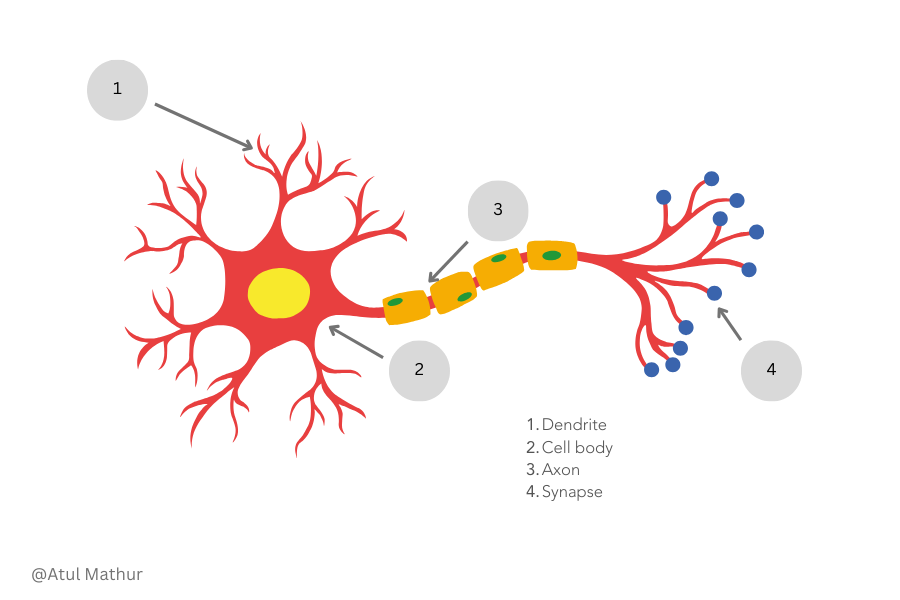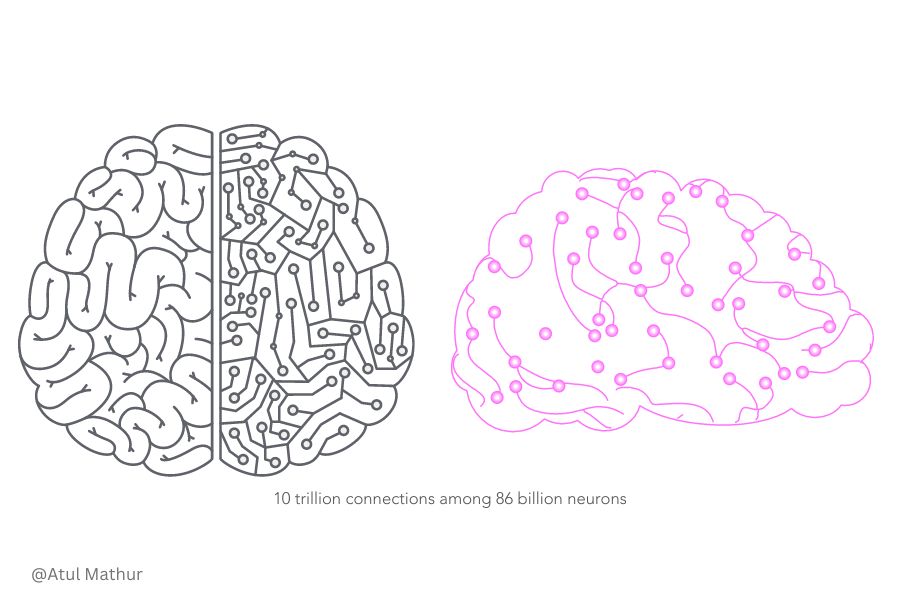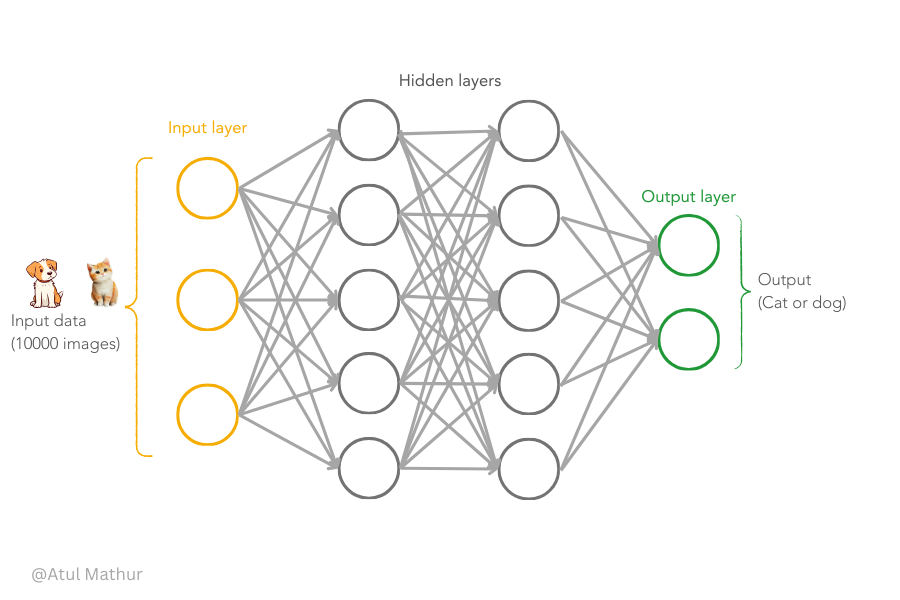Why Are Human Neurons Suing Artificial Neurons?

In a groundbreaking legal battle, human neurons have taken the unprecedented step of suing an unnatural defendant: an Artificial Neural Network (ANN). The charges allege that ANN has unlawfully replicated human neural networks to enhance Artificial Intelligence (AI), mimicking the core functionality of the human brain. Despite these blatant copyright violations, ANN persists in its efforts to emulate the human brain by expanding its network with more neurons.
The question remains: will human neurons prevail against the AI-heavyweight ANN in court?
Opening statement by the Judge
Judge: Good morning, everyone! Let’s commence the proceedings in this historic case.
I am the African elephant. Why am I presiding over this case? In case, you’re wondering about my qualifications, I am one of those rare species in the world with more neurons in my brain than humans. To be more precise, I have 257 billion neurons compared to 86 billion in humans.

I say this is a landmark case because of what’s going on in the world right now. Artificial Intelligence (AI) is rapidly invading our lives from all directions, fundamentally changing the way we work, learn, and live. This case could decide the future of our civilization itself.
Our proceedings will unfold in two distinct phases: Phase 1 will provide an opportunity for human neurons to present their case, followed by Phase 2 where ANN will have the opportunity to defend itself.
Human neurons: My case is solid
Judge: Human neurons (HN), before you explain your charges, could you give us a simple rundown of your physical structure? Most of us haven’t seen you except maybe in pictures or under a microscope used by scientists.
Human neurons (HN): Of course, Your Honor!
We’re the building blocks of the human brain and intelligence. I am not boasting, but thanks to us, you can see, hear, and go about your daily activities.
Though nobody’s counted us one by one, it’s estimated there are about 86 billion of us. But before I talk about how we’re connected, let me describe what we look like.
Judge: Please, go ahead.

As you can see, we have four main parts: Dendrite, cell body, axon, and synapse (from left to right).
Judge: You have these branches on the dendrite side. What’s that about?
HN: Yes, we have multiple branches that connect with other neurons on that side. And you’ll notice the same on the axon terminal side.
Judge: So these branches are your way to establish a network with others like yourself.
HN: Exactly. Each of us can have connections with as many as 15,000 other neurons. Overall, we estimate there are 100 trillion connections among us.
Judge: Guys, you’re throwing in such huge numbers. I can’t even fathom it. But go ahead and now explain how you function. Don’t complicate matters. Just explain as simply as possible.

Human neural network: How does it operate?
HN: Alright, let’s break it down. At an individual neuron’s level, it’s pretty simple: we receive small electrical signals and pass them along. Picture it like this: if you touch something hot, that signal comes to us, we pass it around until your brain tells your hand to move away.
Judge: Interesting! Now, how do you talk to other neurons?
HN: Your Honor, we have a clear division of duties: Dendrites receive signals from other neurons, the cell body sums up all the incoming signals and decides what to do, the axon carries the signal forward, and synapses pass it on to the other neurons.
Judge: Seems straightforward. But do you always pass on every incoming signal?
HN: Not quite. We follow a “fire or no fire” rule. If a signal is strong enough to cross a certain threshold, we pass it on; otherwise, we ignore it.
Judge: Got it. Now, why do you think ANN copied you and deserves to be sued?
HN: Let the culprit explain its structure and actions. Then you’ll see how it’s copying us, clear as day!
Judge: ANN, please proceed with your explanation. Keep it simple and avoid technical jargon. Remember, this is a natural animal court, so use terms everyone can understand. Also, remember you’re under oath, so don’t conceal any similarities with the human brain.
ANN: Best attempt to defend itself
ANN: Your Honor, I’ll keep it simple and honest.
My name is Artificial Neural Network or ANN, the backbone of “deep learning,” which is all the rage in AI these days. I’m used in various fields like medical imaging, speech recognition, and face recognition.
Judge: Why the term “Neural Network” in your middle and surname name?
ANN: Just like the human brain, I have nodes called neurons that connect to form a network. But unlike the human brain’s complex network, I’m neatly organized into three layers.
Judge: What do you mean by three layers?
ANN: Well, we have an input layer, an output layer, and a few hidden layers sandwiched in between. Each layer has nodes, as you can see in this diagram. The lines show how information flows between these nodes.

Judge: Okay, I can see those round nodes forming an input layer, output layer, and hidden layer with lots of interconnecting lines representing the connections.
What do you do with all this stuff? What do you do that makes you so powerful that we have ended up having this court case?
ANN reveals its functional magic
ANN: At a very high level, I take in data at the input layer, process it through the hidden layers, and give an output at the output layer.
Judge: And so?
ANN: Our main capability is to learn, akin to the human brain, and produce a sensible output. For example, if you give me 10,000 images of cats and dogs, I’ll process them and determine whether each image depicts a cat or a dog. Similarly, if you show me thousands of radiological scans of patients, I can learn to detect diseases. The same goes for recognizing faces.
Judge: What if you’re wrong?
ANN: Initially, I may be wrong, but then I adjust my parameters and compare my output with the inputs given. And I keep adjusting until I come close to what you’ve fed at the input layer.
Judge: Does it mean that after all those adjustments…you end up learning how to recognize the cats and dogs or whatever else people want you to learn?
ANN: Exactly! This whole process is known as training. It’s an iterative process. Once I am trained, I get tested on unseen data, and if I pass that test, I am ready for beneficial use.
Judge: Going back to the exotic term you threw in just a minute before: What do you mean by parameters?
ANN: To recognize an image, I don’t treat all input pixels in the same way. I may multiply certain pixels with numbers known as weights to amplify them whereas I may repress or ignore certain pixels. These weights are known as parameters.
This is quite like how you react to incoming feeds in your Facebook or LinkedIn feed: You ignore certain posts, like some, and comment on some.
Judge: Looks like…it is something like…you’re the chef inside the kitchen. We give you a baked cake and let you figure out how it was baked. You experiment with all the different ingredients, quantities, and recipes, until you come close to the sample provided. Once you learn, that’s it. You can easily bake as many cakes as needed.
ANN: Your honor, you got it, but unlike you, I am just a software, living on computers. I deal with anything in digitized form. For me, life is just numbers.
Judge: My head’s spinning, folks. Even with my multitude of neurons, I’m struggling to keep up. But I have understood enough to give a verdict.
The verdict
Judge: It’s undeniable that ANN draws inspiration from the human neural network. Paradoxically, it’s humans themselves, with their boundless creativity, who have researched and ultimately created ANN.
On ANN’s side, it seems to revel in its current position of prominence in the evolution of AI.
My verdict is as follows:
ANN is guilty of copyright infringement as charged by human neurons. However, ANN holds immense potential to benefit mankind in areas like new drug discoveries, medical diagnosis, education, climate change, and so on.
As a penalty, ANN will be required to sign a binding agreement with human neurons, pledging never to act against the interests of humanity. And even if it is smarter than the human brain, it should never forget who is the boss.
The court is adjourned. It’s time for me to go back to the jungle and enjoy some sleep.
Wow !!! Great mind at work. Explained everything in a very simple and fun way. You are a true inspiration 😀
Thanks, Mitesh! I love the challenge and process of turning something complex and dry into simple and engaging.